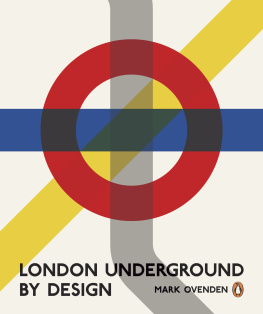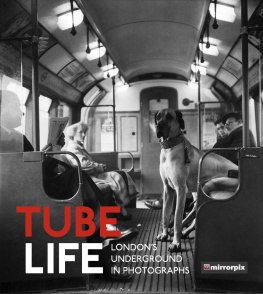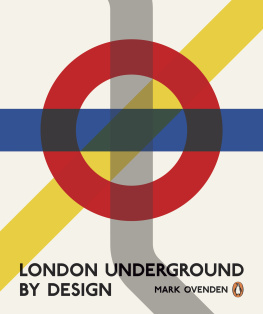Pagebreaks of the print version

LOOK AGAIN
A PHOTOGRAPHIC JOURNEY THROUGH THE LONDON UNDERGROUND
LOOK AGAIN
A PHOTOGRAPHIC JOURNEY THROUGH THE LONDON UNDERGROUND
Elke Rollmann and Niko Rollmann
This book is dedicated to the people who planned the London Underground and who built the tunnels; to the drivers and the station staff; to those responsible for design and artwork; to the firefighters, rescue services and civilians who have helped save lives at times of emergency in the Underground; and, last but not least, to all the people who helped us with this book.
We would like to thank Anna and Mark Rollmann for giving us valuable advice, Wendy Toole for engaged proofreading and Ingar Palmlund for encouraging us all the way through this project. A special thanks also goes to Rdiger Serinek for his support!
All the photos were taken between 2007 and 2020.
First published in Great Britain in 2021 by
Pen and Sword Transport
An imprint of Pen & Sword Books Ltd.
Yorkshire - Philadelphia
Copyright Elke Rollmann and Niko Rollmann, 2021
ISBN 978 1 52678 108 6
eISBN 978 1 52678 109 3
Mobi ISBN 978 1 52678 110 9
The right of Elke Rollmann and Niko Rollmann to be identified as authors of this work has been asserted by them in accordance with the Copyright, Designs and Patents Act 1988.
A CIP catalogue record for this book is available from the British Library.
All rights reserved. No part of this book may be reproduced or transmitted in any form or by any means, electronic or mechanical including photocopying, recording or by any information storage and retrieval system, without permission from the Publisher in writing.
Pen & Sword Books Ltd incorporates the Imprints of Pen & Sword Books Archaeology, Atlas, Aviation, Battleground, Discovery, Family History, History, Maritime, Military, Naval, Politics, Railways, Select, Transport, True Crime, Fiction, Frontline Books, Leo Cooper, Praetorian Press, Seaforth Publishing, Wharncliffe and White Owl.
For a complete list of Pen & Sword titles please contact
PEN & SWORD BOOKS LIMITED
47 Church Street, Barnsley, South Yorkshire, S70 2AS, England
E-mail:
Website: https://www.pen-and-sword.co.uk
or
PEN AND SWORD BOOKS
1950 Lawrence Rd, Havertown, PA 19083, USA
E-mail:
Website: www.penandswordbooks.com
The London Underground
It is past and future
It is light and darkness
It is fantasy and reality
It is delight and frustration
It is integration and isolation
It is noise and silence
It is departure and arrival
I NTRODUCTION
The London Underground is the worlds oldest metro system. With its mixture of vintage architecture, classical modernism and recent avant-garde station design, it is unlike any other underground railway. In terms of the systems size, it is also one of the worlds Top Ten. Opened in 1863, it now consists of 11 lines, 270 stations (plus a number of ghost stations), some 4,000 carriages and over 250 miles of track. Less than half of the network is actually underground. Up to five million passenger journeys are made on the Underground every day, and some 6,000 people work to keep it going. For over 150 years, the construction and maintenance of this system has been a considerable challenge, a complex high-tech operation.
Nowadays, we find nothing special about the idea of descending into the Underground and boarding a vehicle that drives through long tubes. It has become part of our urban routine to such a degree that we can hardly understand anymore how daring and revolutionary the whole idea had once been. In its early days, the Underground found itself confronted with a massive amount of hostility, scepticism and ridicule. There were, for example, significant concerns about possible health problems resulting from regular subterranean travelling (going far beyond the real problem of smoke inhalation). In an age when most people were still very religious the Underground was perhaps a little too close to hell which had to be s omewhere down there.
But why go underground at all? Why make all the effort to dig up Londons roads and build a travel system deep beneath its streets? Well, at the time, London was a rapidly growing city and in terms of traffic, there was just too much growth! Getting from A to B in the inner city had become a nightmare, the narrow roads being clogged with carts, cabs, wagons, omnibuses, pedestrians, dogs, cattle and other animals.















